NOAA Sued Over Whale Injuries from Drift Gillnets off California
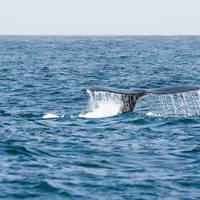
Environmentalists on Thursday sued the agency overseeing U.S. fisheries, claiming it had failed to protect endangered humpback whales from entanglement in drift gillnets - sprawling curtains of nylon mesh - used in commercial fishing off California.The lawsuit accuses the National Marine Fisheries Service of violating the Endangered Species Act by allowing drift gillnets without safeguards and failing to take into account the harm posed to whales already at risk of extinction.The suit…
New Report Tracks Sources of Marine Litter
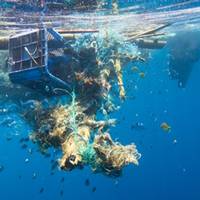
The sources and impact of sea-based marine litter form the focus of a new report by the Group of Experts on the Scientific Aspects of Marine Environmental Protection (GESAMP), an advisory body to the United Nations sponsored by 10 UN entities. The report outlines the various sources of marine litter and the impact and assesses the current availability of data and identifies knowledge gaps for the main categories of sea-based sources of marine plastic litter. The Working Group was established by GESAMP…
Mexico: New Fishing Regulation Endanger Near-extinct Porpoise Species
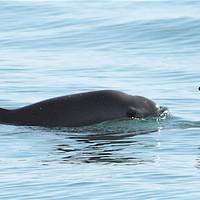
The Mexican government’s decision to loosen its policy of keeping a fishing-free zone around a protected area in the Gulf of California region was a “setback” to keeping alive a near-extinct porpoise species, a conservation group said on Thursday.There are thought to be only between six and 20 vaquita porpoises left and the species is on the brink of extinction as more die each year in fishing nets than are being born, biologists say.Mexico had previously banned boats entering the species’ last sanctuary off the coast of Mexico, known as the “zero-tolerance zone”.
Indonesia Nabs Elusive Criminal Fishing Boat
Indonesia, acting on a request from Interpol, has seized a fishing boat carrying 600 illegal gillnets that can stretch up to 30 km (18 miles) after it evaded capture in several countries, the Fisheries Ministry said. The vessel, the STS-50, had targeted Antarctic toothfish, the ministry said, a cod species that plays an important role in the Southern Ocean ecosystem. Gillnetting, which uses walls of finely meshed nets, has been banned in Antarctic waters since 2006 and is described by Australia as posing a huge risk to “almost all marine life”. Officially stateless, the STS-50 evaded authorities by flying eight different flags at different times, including those of Sierra Leone, Togo, Cambodia, South Korea, Japan, Micronesia and Namibia, the ministry said in a statement on Sunday.
Greenland Builds New Research Vessel
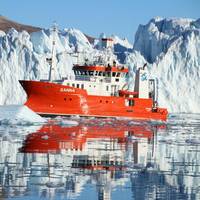
Greenland has an intense interest in maritime research and survey for the near coastal waters, thanks in part to a growing seafood sector, an extensive coastline and some 250 different species of fish. To meet the nation’s emerging need, Greenland had a fine 32.3-meter research vessel built at the Karstensen’s Shipyard in Skagen, Denmark. The vessel was named R/V Sanna by Helle Siegstad, Head of the Department of Fish and Shellfish, in a ceremony at Nuuk, Greenland in April of 2012.
Great Lakes Shipyard Overhauls RV Sturgeon
Great Lakes Shipyard, Cleveland, Ohio, completed five-year overhaul work on the U.S. Geological Survey Research Vessel Sturgeon. Under a Fleet Maintenance Contract with the Great Lakes Science Center, Ann Arbor, MI of the U.S. Geological Survey, Department of the Interior, the Sturgeon was drydocked and given a thorough cleaning, painting, inspection, repair and tune up. Some of the major work items included redesigning the hydraulic system, shaft and propulsion repairs, generator overhauls and steering system repairs. The 105 ft. long Sturgeon was built in 1974 and is home-ported in Cheboygan, MI. The Sturgeon is the Center's second largest vessel with great geographic range and advanced scientific abilities.
Second Research Vessel at Great Lakes Shipyard
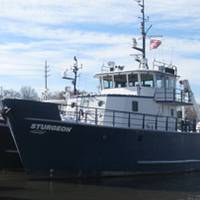
Great Lakes Shipyard, Cleveland, Ohio, will perform repairs, haul out and drydocking, as necessary, to the U.S. Geological Survey Research Vessel Sturgeon under a fleet maintenance contract with the Great Lakes Science Center, Ann Arbor, Mich. of the U.S. Geological Survey, Department of the Interior. The 105 ft. long Sturgeon was built in 1974 and is home-ported in Cheboygan, Mich. The Sturgeon is the Center's second largest vessel with great geographic range and advanced scientific abilities.
News: A New Boat for Newfoundland
Edmund Porter, of Port de Grave, Newfoundland, started fishing with his father some 35 years ago as a teenager. A few years later, having moved out on his own, he was joined by his wife Marian. In 1979 he built his first vessel, a 33-ft. trap boat. The couple have now shared three decades as a fishing family. This past July, they christened a new boat, the MV Ashton & Cody named after their two grandchildren. The naming of the boat for a new generation is particularly fitting as the boat also represents the new fisheries of Newfoundland. Since the collapse of the cod stocks, fishermen have been turning to shrimp and crab fishing with good success. The 62 by 22-ft. MV Ashton & Cody is a tangible result of that success.
Construction of Marine Science Vessels Up
Marine science is making great strides forward due in large measure to several new vessels that have delivered recently and others under construction Headlining this news is the Oscar Dyson, the first of four vessels loaded with scientific gear that the National Oceanic and Atmospheric Administration (NOAA) is having built at VT Halter Marine, Pascagoula, Miss. The first vessel was completed in September of 2004 and as the Oscar Dyson was being completed, the contract for the second vessel, Henry B. Bigelow was announced. These 208-ft. by 49-ft. vessels have cutting edge capabilities to gather scientific information on fish populations and the water quality of their habitat.






